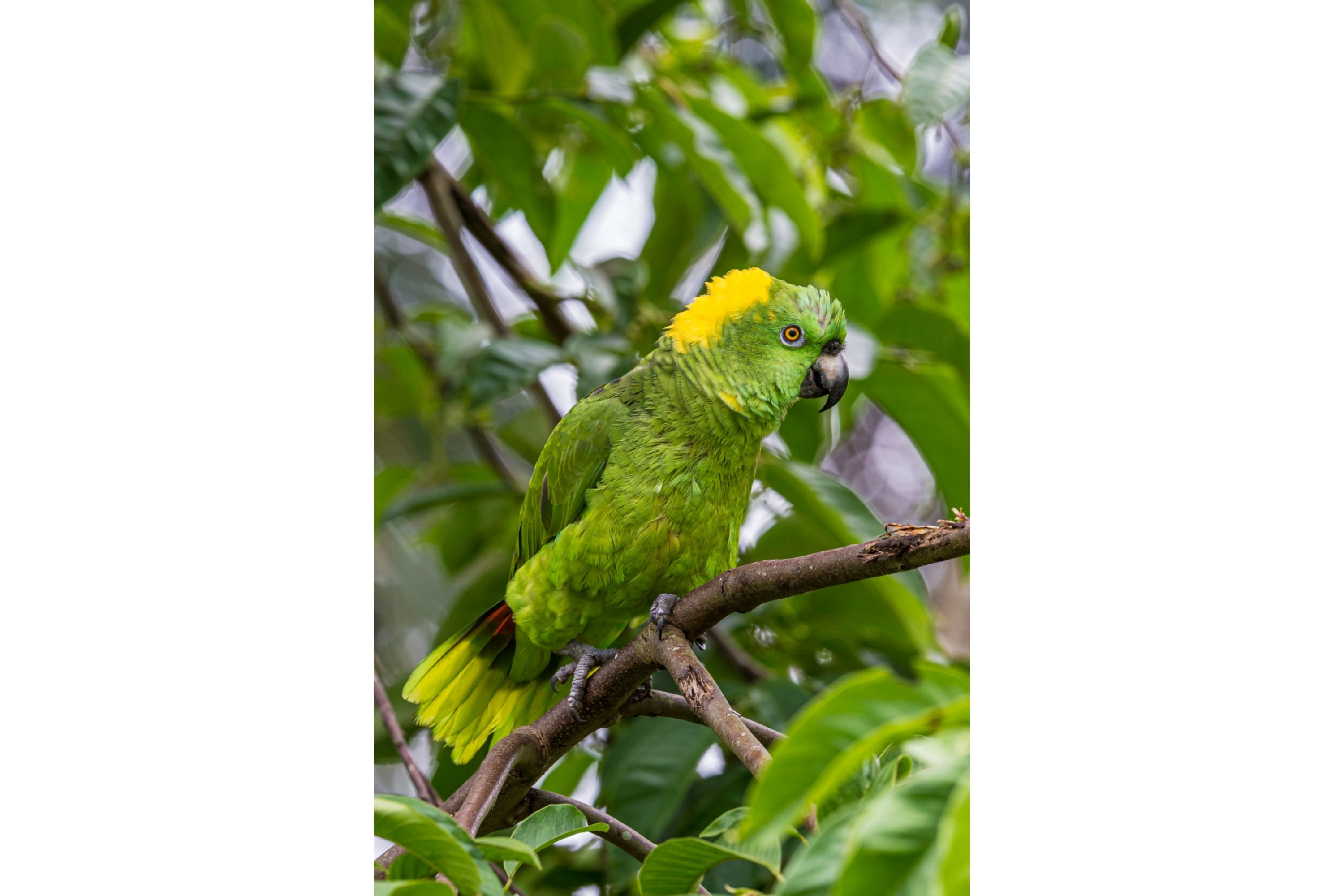Yellow-naped amazon
(Amazona auropalliata)

Description
The yellow-naped amazon or yellow-naped parrot (Amazona auropalliata) is a widespread amazon parrot sometimes considered to be a subspecies of the yellow-crowned amazon (Amazona ochrocephala). It inhabits the Pacific coast of southern Mexico and Central America. It is has been recently been reclassified as Critically Endangered by the IUCN Red List due to a dramatic decline across the extent of its range. Yellow-naped amazons have lost more than 92% of their population over the last three generations. The primary cause for their population decline are deforestation and illegal removal of young for the parrot trade. This parrot readily mimics sounds, and in captivity, this includes human speech, which is probably the reason it is popular in aviculture. Like all parrots, however, mimicking abilities vary greatly between individuals. Recent surveys of the Costa Rican population across an 11-year time span found a significant decline in their population. Despite this decline, the Costa Rican population is considered to be the stronghold for the species. Yellow-naped amazons inhabit dry forest and mangrove habitat of the tropics, and nest in naturally occurring cavities Although yellow-naped amazons will not excavate cavities, they will chew the entrance. The parrots will nest in a wide variety of trees, although dead Coyols (palm trees) are one preferred species. During the breeding season, pairs are monogamous, and pairs defend small breeding territories around the nest by duetting with their partners. Breeding success is low (89%), and the majority of nests fail due to poaching The vocal behavior of yellow-naped amazons has been more extensively studied than in any other wild parrot. Yellow-naped amazons, like all parrots, exhibit vocal learning behavior in the wild. This behavior manifests in the form of vocal dialects, in which the repertoire of calls that parrots vocalize change at discrete geographic boundaries, similar to how humans have different languages or dialects. These dialects also are meaningful to the parrots; they are less responsive to calls that are not their own dialect. Dialects are also stable over long periods of time.
Taxonomic tree:







